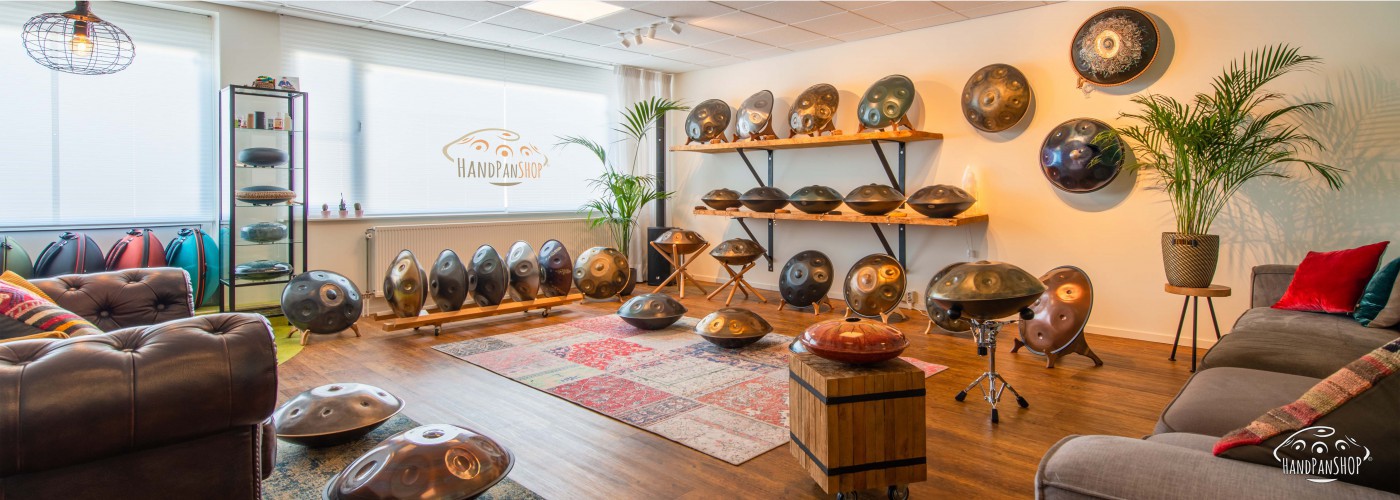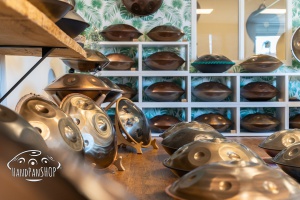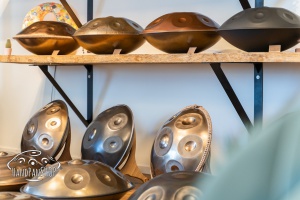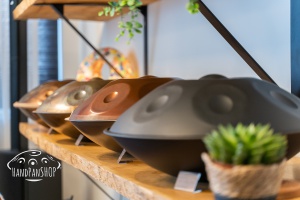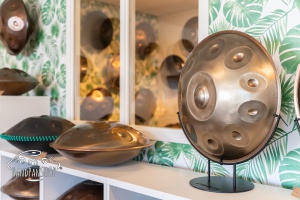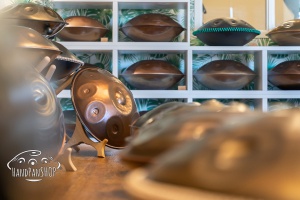How to choose the right handpan Frequency?
Finding the right handpan can be quite a challenge because there are numerous factors to consider. Once you know the scale, metal type and manufacturer you prefer, you're almost there. The last step is to choose the frequency for your instrument. On this page, you will learn all about the options available and why frequency might be relevant.
Buying Guidance
To assist you with the choices mentioned above, we have developed an orientation session. Together with an experienced player, you will discover the type of handpan that suits you best. The orientation session costs €65 but is NOT charged when you purchase a handpan.
What does the number of hertz mean for a handpan?
Everyone has heard of the term "scale" and perhaps that we use letters A through G to denote notes within this scale. To do this, we need to know what an A is. Going further back in time only makes it more challenging to find a clear answer. The rise of classical music played a significant role in music notation and the naming of specific tones. Around 1850, a universal agreement was reached, defining A3 as 440 Hz. In other words, A3 equals 440 vibrations per second.
By setting the number of vibrations per second for an A, you can calculate the pitch of other notes. The higher the number of vibrations, the higher the pitch, and vice versa. An illustrative example is an old-fashioned kettle: as it gets hotter, the pressure increases, resulting in faster movement and a higher pitch.
Before 1850, people already made agreements on the number of vibrations per second for an A, but the agreements were only captured regionally and varied greatly, ranging from A=420 Hz to A=460 Hz. Some regions made their choices based on no more than "having to choose something." In such cases, people generally had no trouble transitioning to 440 Hz. However, some regions held more firmly to their previous choices, for various reasons. The main reason is that the different tunings are still being used today. Nevertheless, 440 Hz is the most widely used frequency since 1850. If you walk into a music store now, everything will be tuned to this frequency. This is also the fact when you turn on the radio or play a record from your collection.
In the world of handpans, you will encounter different frequencies more often than in other musical contexts. The reasons for this are diverse. One of these reasons is that the handpan is often played solo, so you don't have to consider playing with others and can autonomously make your choice. Another reason is related to traditions from the spiritual domain. In the following paragraphs, you will read more about the differences and why a particular tuning might or might not be suitable for you.
Handpan frequency 440 Hz
As mentioned earlier, 440 Hz has been the standard for a long time now. Born out of the need for more collaboration, both regionally and on a larger scale, a universal tuning was established. The choice for 440 Hz was not accidental and was based on various reasons:
• The tunings at that time ranged from 420 Hz to 460 Hz. 440 Hz was, therefore, a nice middle ground.
• The basic pitch of wind instruments, which were dominant during that time, fit well in 440 Hz.
• String instruments sounded the fullest and loudest in 440 Hz.
This was an important requirement at a time when there was no amplification.
The transition to this standard came not without difficulties. The process started around 1850, but it wasn't globally accepted until 1953. Most music recordings have been made after 1953. So, there is a good chance that the music you encounter now is tuned to 440 Hz.
Handpan frequency 432 Hz
Next to 440 Hz, is 432 Hz also a well-known tuning. This is mainly attributable to the world of classical music. Several composers wrote their masterpieces during times when 432 Hz was the norm in their region. Among these composers are Beethoven and Mozart, both very prominent figures. Whether they would have done the same if another tuning was the norm is unknown. But the fact is that it happened during that period. Tradition is highly regarded in the world of classical music, and there are still classical musicians who play in 432 Hz to honour the masters and their works.
In spiritual circles, 432 Hz is also an increasingly popular phenomenon. The reasons vary significantly. One well-known nickname for 432 Hz is the "heart frequency." This is based on measured values of both the human heart and the centre of the earth. The theories regarding
432 Hz range from small-scale ideas to elaborate stories about malevolent ideologies. It is not meaningful to delve into all these theories. Our best advice is to follow your own intuition.
Handpan frequency 444 Hz
A lesser-known variation is 444 Hz. This tuning gained popularity during the hippie years when pop music was on the rise, and the protest against the establishment was loud. 444 Hz is also referred to as the "love frequency." Players like Jimi Hendrix and John Lennon preferred to tune their instruments to 444 Hz. Although this tuning has gained considerably less notoriety than 432 Hz, it is still present and used in spiritual circles.
The differences between the various frequencies
Obviously, the differences between these frequencies are pitch-related. An A played at 444 Hz sounds the highest, at 440 Hz it falls in the middle, and at 432 Hz it sounds the lowest. These differences are audible but not substantial. The difference between A=440 Hz and the next note, B-flat, is 26 Hz: 466 Hz. That's already considerably more than going four Hz up or eight Hz down from 440 Hz.
When switching tunings, you don't hear a different note, but rather a different dissonance. Importantly, this dissonance is only noticeable when two different tunings are played together. Without that comparison, each instrument sounds "pure" by itself.
The similarities of the different frequencies
There are enough differences between frequencies, but also enough similarities. The ratios from note to note are the same in all tunings. Therefore, a particular scale sounds exactly the same, regardless of the chosen tuning. Without a reference, it's challenging to distinguish whether something is in 432 Hz, 440 Hz, or 444 Hz. To hear this, you would need perfect pitch, a gift that only 1% of the population possesses.
One equality is that every handpan responds to temperature changes. As long as these changes are uniform, such as when a heater is turned on during the day, the handpan will respond consistently. You won't hear this, but with the rise or fall of temperature, the base frequency of your handpan will move a few hertz. However, if there is uneven heating, such as from the sun or a fire, your handpan will sound out of tune. This is because certain parts of your handpan become warmer than others. This temperature inequality results in a frequency inequality, which sounds out of tune. The latter is bad for your handpan and, therefore, absolutely not recommended.
Our advice
Our advice is simple: if you plan to play a lot with other people, it is advisable to choose the frequency most commonly used in the circles you are in. In more traditional circles, it will likely be 440 Hz, while in more spiritual circles, it might be 432 Hz or 444 Hz. If you have no plans to play together with other people or are unsure where it will lead, our advice is to follow your intuition. There are so many variables to consider: material, scale, maker, frequency... This leads to an enormous range of possibilities. In this case, being as open as possible to feelings and experiences is the best way to make the right choice. Book an orientation session now to discover which handpan suits you best. The orientation session costs €65 but is NOT charged when you purchase a handpan.


